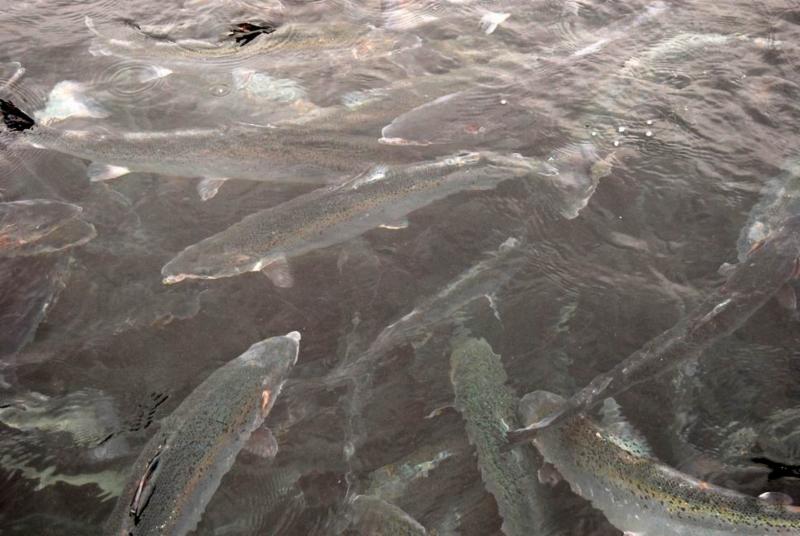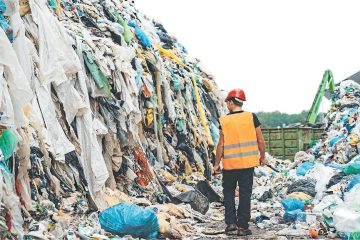OpEd: Food in the age of the Eco-chef — Artful Soil dishes, GIY-based Menus and Zero-Waste Restaurants

Image: baby vegetables served in an edible soil
December 22nd , 2016
Can food be Art?
Do chefs use food to transmit messages that go beyond flavour and presentation?
It’s a question that may seem to be bordering on the ludicrous –especially while holding a fast-food branded cheeseburger in your hands–but merely being beautiful has long been dismissed as sufficient grounds to legitimately elevate something to the level of art. The notion of art itself has become so contested and destabilized, and the authority of the would-be purveyors of art, so vociferously challenged that it’s very risky territory indeed to attempt to declare something to be art. Interestingly to declare something not to be art has become very controversial. Even reality television has been described as art in so far as it makes a statement about society it can be considered to be a work of art. According to the postmodern-school of criticism virtually anything can be art. There is no longer any universal authority that gets to decide. So after Andy Worhol’s iconic ‘Campbell’s Soup Cans’ comes the new wave of Eco-chefs with a surprisingly powerful message to deliver about consumerism and the power of the culinary arts to support a sustainable ecosystem.
Can a dish deliver an ecological message? Does it impact our view of the world? Does it create sensory pleasure in its aesthetics as well as in flavour? Can the creativity of a chef expressed through his or her food actually support an ecological approach to food? These are questions that very much interest innovators as Euro-toques Ireland.
For those people affectionately referred to as ‘foodies’, the food ‘nerds’ that research the latest trends in food, that seek out the new and exciting chefs and even travel around the world to experience a world-class restaurant, stating that food can be an art-from is about as straight-forward as observing that the sky is blue. Food preparation has always been an art, the word ‘art’ itself is derived from ‘human workmanship’ it would seem entirely reasonable to say that the culinary arts are the most primordial and universal of all art-forms. After all, we decorate chefs with prestigious awards and prizes and some even become celebrities based on the creativity expressed in their dishes.
Scoff or not at the idea of food being art but we value our food and those that innovate in its preparation and this practices spans all the way back into prehistory. The French even use the same adjective to describe someone inclined to appreciate the culinary arts as they do for gourmet food itself; the word is ‘gourmand’. Us anglophones have had to improvise to come up with a term to describe those that have a passion for fine cuisine. The French Wikpedia page describes Culinary Arts as an artistic form which brings together the principles applied to cooking, the presentation of the food itself and the objects associated with its presentation, as well as the setting all placed into the context of an experience. Culinary art is much much more than flavour, just like art is more than just beauty, if you’re aiming for art rather than just a tasty meal then the whole process has to be carefully thought out and constructed. What exactly is being constructed in the most innovative restaurants in Ireland and around the Globe? The answer is an ecological message, get back to basics and take ownership of your own food. Quite literally chefs are taking food from the soil to the plate. Gourmet cuisine today is going into the garden according to the our two speakers from Euro-toques Ireland. Euro-toques describes its members as ” custodians of Irish culinary heritage and the food culture of Ireland today and tomorrow”.
The future of Irish food culture is Green. Caroline Byrne identified GIY as being at the heart of the ethos of Euro-toques Ireland and Chef Rob Krawczyk said the most important message to pass on to younger chefs is the importance of growing your own food. Growing your own ingredients is the key to high-quality and locally-sourced dishes. The integrity of a restaurant is increasingly being evaluated according to ecological considerations since there is a natural overlap between local sourcing of seasonable produce and sustainable food practices.
[x_blockquote cite=”Caroline Byrne – Manager Euro-toques Ireland” type=”left”]Growing your own food and having a lot of integrity around sourcing locally grown and seasonal food, that is what the ethos of the Euro-toques chef community is.[/x_blockquote]
When chefs go green – Eco-chefs care about quality soil and adapt their menus to their gardens
Brabazon restaurant keeps their own walled kitchen garden along with two polytunnels in Tankardstown House. They grow all their own herbs, grapes, strawberries, rhubarb, vegetables and more. Every morning at Brabazon the chefs go out into the garden and pick their produce for serving in their dishes. The process is really about getting back to the basics, local seasonal food is ‘in’ and imported foods with a heavy carbon footprint are ‘out’.
Importing foreign produce is no longer a prestige-adding practice for restaurants catering to the higher end of the market, indeed locally sourced produce is much more likely to impress Irish foodies. Forget champagne and caviar flown in from France, food culture in Ireland is eager to taste innovations straight from our own Irish gardens. The push for local and seasonal food also has a real ecological benefit. Not only is the heavy carbon footprint of imports reduced but the process–which is being passed on to the younger generation of Irish chefs—feeds into the circular economy model. Instead of the take, make and dispose model that industry typically adopts, these chefs are pioneering an ecological approach to cooking and adopting the sustainable model that reduces food waste, improves quality and furthermore delivers an experience which showcases an ecological attitude towards food. Are you ready for your soil-bed of vegetables appetizer?
[x_image type=”none” float=”none” src=”https://greennews.ie/wp-content/uploads/2016/12/redzepi.jpg” info=”none” info_place=”top” info_trigger=”hover”]
Image: Rene Redzepi Signature Dish at Noma Restaurant Copehagen ‘Vegetable field with malt soil’ Food for thought
Growers and foodies are now joint allies in the fight for sustainable business models as top-ranked restaurants and chefs are increasingly interested in showcasing sustainable ecologically-sound models for food preparation in their signature dishes. Chef Krawczyk complimented world renowned chef Rene Redzepi, creator of the above edible-soil dish for his dedication to growing his own food in order to get produce at its very best. Redzepi’s dishes are often vegetarian-based explained chef Krawczyk, as he spoke about Redzepi the image projected onto the screen was of the award-winning chef in wellington boots kneeling in a garden tending to vegetables. This image really sums up the talk very well.
Eco-chefs are involved in growing their foods and they bring this experience to the plate in a multitude of highly-creative signature-dishes. Some experiment, playfully, with edible soil underlining their back to basics approach but also making a serious point. Redzepi’s Noma restaurant is ranked as best restaurant in the world by Restaurant magazine and has been awarded two Michelin stars. In 2010, a cookbook was published about the philosophy of Noma’s cusine. The title: Time and Place in Nordic Cuisine is oddly evocative of art criticism. One might just as soon expect to read a title such as Time and Place in the works of Marcel Proust. Food is considered to be art and this art is politically motivated, it wants to preserve and protect the environment where we grow our food.
Suffice to say, there is huge interest in the ecological turn of haute-cuisine.
Chef Krawczyk spoke about pioneers that have raised the bar through their commitment to environmental movements such as GIY and Zero-Waste. Of course, these movements go hand-in-hand with the principle of a circular economy. Some chefs have taken the principle to astounding extremes. For example, Dan Barber is a passionate enthusiast of the GIY movement and he controls the entire supply-chain of his food. He is the co-owner of Manhattan’s Blue Hill farm which directly supplies his restaurant all the way from the farm to the plate, including animal and vegetable.
Another fascinating ec0-chef is Douglas McMaster of Silo in Brighton. Silo is a great example of how a restaurant can be built from the ground up to respect the integrity of an ecological cause. Zero-Waste is integrated into all aspects of food at Silo. The sole exception is oven-cleaning products! Such a high level of innovation and commitment to an environmental ethos is not only encouraging to see, it is the beginning of a trend in the culinary arts. Chefs are to be found carefully tending to their compost. As we move forward with the People4Soil campaign let’s hope that the foodies as well as the Zero-Waste and GIY enthusiasts will seek to protect our soils from compaction, pollution and other irreparable damage by signing our petition:
[x_button shape=”square” size=”regular” float=”none” href=”http://environmentalpillar.ie/people4soil/” info=”none” info_place=”top” info_trigger=”hover”]Sign the People4Soil Petition[/x_button]
Chef Rob Krawczyk spoke recently at the Environmental Pillar’s launch of the People4Soil campaign. Most of us don’t think very much about how our food was grown, but chef’s are increasingly taking their raw materials into their own hands by getting out of the kitchen and into the garden soil.
[x_video_embed type=”16:9″] [/x_video_embed]
The lowdown on Edible Soil
The soil dishes pictured above are made from ingredients which have been conditioned to look like soil from the earth. However, Japanese chefs have served treated soils in some of their dishes. Tribal peoples and in particular pregnant women have consumed soil and clay from the earth as part of their diet. Soil can contain dangerous microbes and is not fit for human consumption untreated. ‘Edible soils’ can be made from a range of ingredients. In 1992, French chef Michel Bras made an edible soil from brioche crumbs and black olives as part of his signature Gargouillou salad. Japanese chef Toshio Tanabe popularized tsuchi ryōri or “earth cuisine” using a mulch of coffee grounds and palm-fiber peat. Rene Redzepi uses malt for his edible soil, whereas Yoshiro Narisawa winner of ‘Best Restaurant in Asia 2016’ serves a soil soup made from soil and burdock root covered with fine earth and water. Chef Yoshiro had a flash of inspiration while visiting an organic farm in the hills of Nagano prefecture. The recipe involves pan-frying burdock root with earth and then simmering and straining the resulting mixture. The surface liquid is then heated without adding any additional seasoning for a very literally true taste of terroir. Noma’s dish along with many other soil dishes have gone viral on foodie websites and blogs with lots of recipes for people to try.
With organic GIY inspiring the order of the day in world-class restaurants let us playfully mimic Marie Antoinette and declare “Let them eat dirt!”
[x_author title=”About the Author”]







